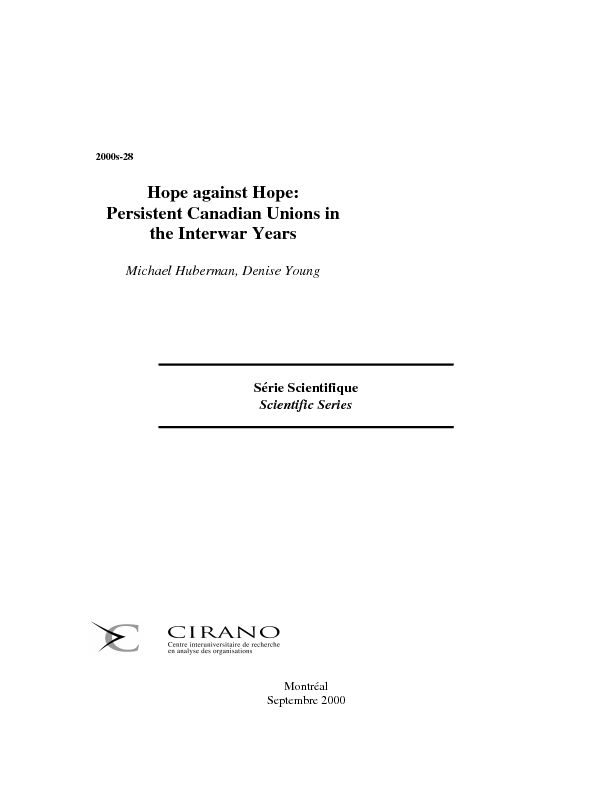Hope against Hope: Persistent Canadian Unions in the Interwar Years
Current forecasts paint a dismal future for unions; observers in the 1920s and 1930s also projected bleak prospects for organized labor. Analysts in the interwar years were off the mark. This paper seeks to investigate whether the revival of the labor movement before WWII was the result of institutional change, in particular the coming of the CIO, or the outcome of an internal dynamic that gave rise to rapid declines and spurts in growth. We test these two views in a war-of-attrition context, using a newly constructed data set on Canadian strikes between 1920 and 1939. Estimation is undertaken in a competing-risks framework. We find that workers did not cave in when employers sought to break their unions, and under certain conditions workers could outlast employers. The increasing proportion of worker wins in the early to mid 1930s led to the rise in union membership observed before the arrival of the CIO in Canada in 1937. We conclude that current predictions regarding the end of unions in the twenty-first century may prove to be premature.
[ - ]




